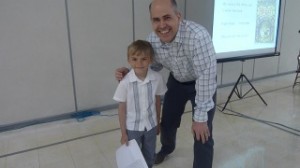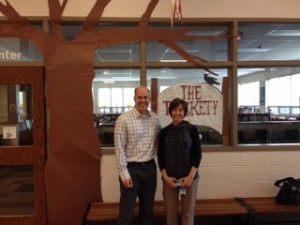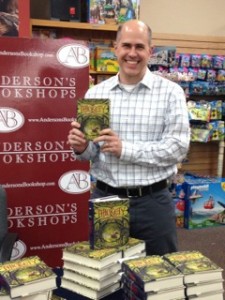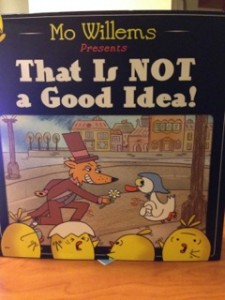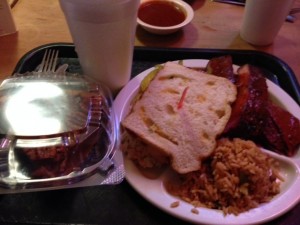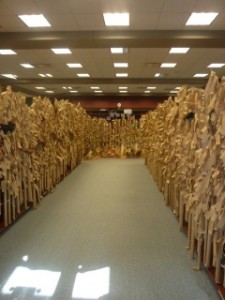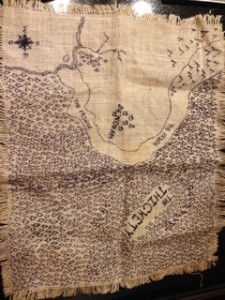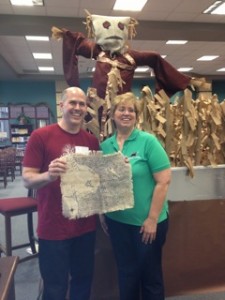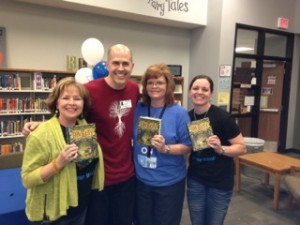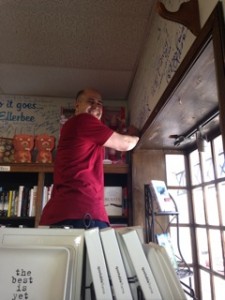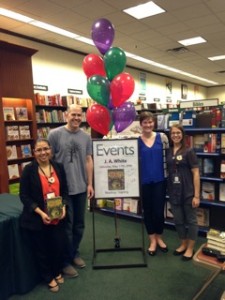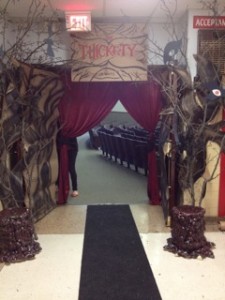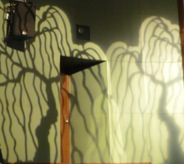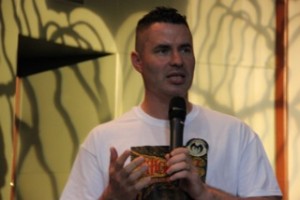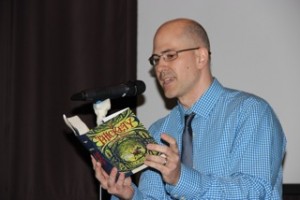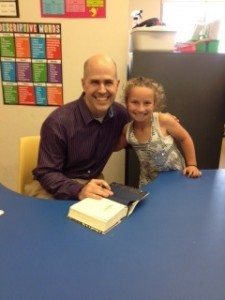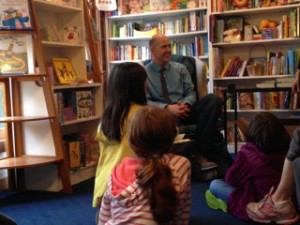Blog
Thickety Book Tour: Cincinnati
From the moment I received my book tour itinerary, I have expected Cincinnati to be the worst day of my tour. This has nothing to do with Cincinnati itself. In fact, I don’t know anything about Cincinnati, other than the Reds and WKRP are there. But the way my schedule shook out on that particular day was brutal. I left my Chicago hotel room at 4:30AM for my flight (luckily it was the airport hotel, so I just had to wheel my luggage through some moderately creepy tunnels to get there). However, my flight to Boston was due to depart that same night at 8:15; I would wake up in Chicago, spend the day in Cincinnati, and sleep in New Bedford, Massachusetts.
At the airport, a nice dude at the baggage check counter, seeing my schedule, suggested that I send my luggage straight through from Chicago to Boston, bypassing Cincinnati altogether. This meant I wouldn’t have to go through the hassle of baggage claim and checking my bag all over again, but the idea of all my clothes going AWOL for day made me nervous. This might have had something to do with the way the conversation played out:
ME: Wow, send it straight to Boston, huh? That sounds great! You can do that?
NICE DUDE: Um…sure. Yeah. We can do that.
ME: So I’ll just leave my bag here and pick it up in Boston?
NICE DUDE: Yeah. I think. It might get there before you, though. So if you can’t find it on the baggage carousel…just ask around.
ME: Ask…around?
NICE DUDE: I’m sure it’ll be somewhere.
For the rest of the day, I was concerned that the clothes currently on my back would be the ones I wore for the remainder of the tour. Promise I’ll get back to that story at the end of this post…
I met Annette, my media escort for the day, at the airport. She could not have been sweeter. As an introduction, she even gave me a little care package filled with chocolate and other goodies. This would be a harbinger of things to come: people in Cincinnati are ridiculously, improbably, unnaturally NICE. This phenomenon continued as we arrived at Sts. Peter and Paul Academy, where I met Kelly and Dave from JosephBeth Booksellers. They were both the absolute coolest, and despite my increasingly comatose state I could see that it was going to be a fun day.
As I did my presentation in the cafeteria, I grew worried that the students were bored or disinterested, because they just stared at me the whole time without making a sound. Then I started worrying that there was something on my face and they were just too polite to say anything; remaining silent might have been the only way they could restrain themselves from bursting into hysterical laughter. (Sleep deprivation does funny things.) It was only at the end, as I answered the students’ thoughtful questions, that I realized they had been totally invested in what I was saying and were just preternaturally well behaved. And their questions! Whoa! So smart! Even the teachers got into it, asking me about themes and my writing process and all manner of things that kept me on my toes.
“Which is scarier?” results…
abandoned hospitals vs. abandoned amusement parks (abandoned hospitals)
spiders vs. cockroaches (spiders)
dolls vs. creepy children (creepy children)
the dark vs. clowns (the dark—first time winner!)
After the presentation we went to JosephBeth Booksellers—what an amazing bookstore! It’s HUGE, but it also feels cozy and welcoming, a neat trick to pull off. Kelly and Molly–queen of the children’s department and another stellar example of Cincinnati friendliness–had tag-teamed to make THE THICKETY the Kids’ Book of the Month for May. Pretty sweet!

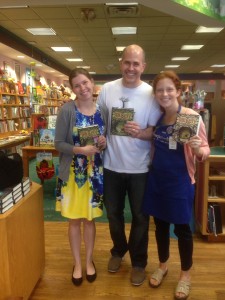
We had lunch at the cute café attached to the bookstore (turkey sandwich, much laughter) and then, as there was still time before my next school visit, I did what comes naturally and shopped for books. On the plane ride I had read THE DINNER by Herbert Koch—which was unsettling in the best way possible—but now I was looking for something a little lighter. I decided on MR. PENUMBRA’S 24-HOUR BOOKSTORE by Robin Sloan. It sounded kind of quirky, but more importantly it had been recommended by a member of the staff, which is always the way to go at independent bookstores.
My second presentation that day was to an adorable group of third graders at the Cincinnati Public Library, a building larger than most malls and/or airport terminals. It was HUGE! Being in front of a group of third graders was pretty comfortable for me (being a third-grade teacher and all) but it did make me miss my students.
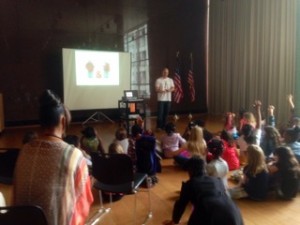
In the “Which is scarier?” survey, my library group picked hospitals, cockroaches, creepy children, and clowns, bringing the current totals to:
abandoned hospitals (4) vs. abandoned amusement parks (1), 1 tie
spiders (3) vs. cockroaches (3)—this one’s close!
creepy children (5) vs. dolls (1)
clowns (5) vs. the dark (1)

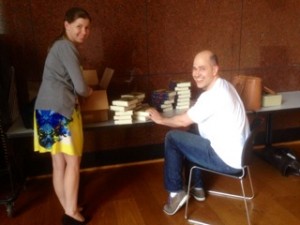
I was nervous about making my flight after my JosephBeth event, since we were cutting things kind of close schedule-wise. Annette drove like a champion, however, and I was in plenty of time. (The fact that there was NO LINE at security helped a lot.) Since I had some extra time at the gate I figured I would check on my bag’s status. I didn’t think the woman at the counter would be able to help me, but I decided to try anyway—and lo and behold, she found my bag…which was still in Cincinnati. She asked, “Would you like this to come to Boston with you?” to which I replied, “That would be swell.”
Moral of the story: It never hurts to ask.
Next stop: Boston!


